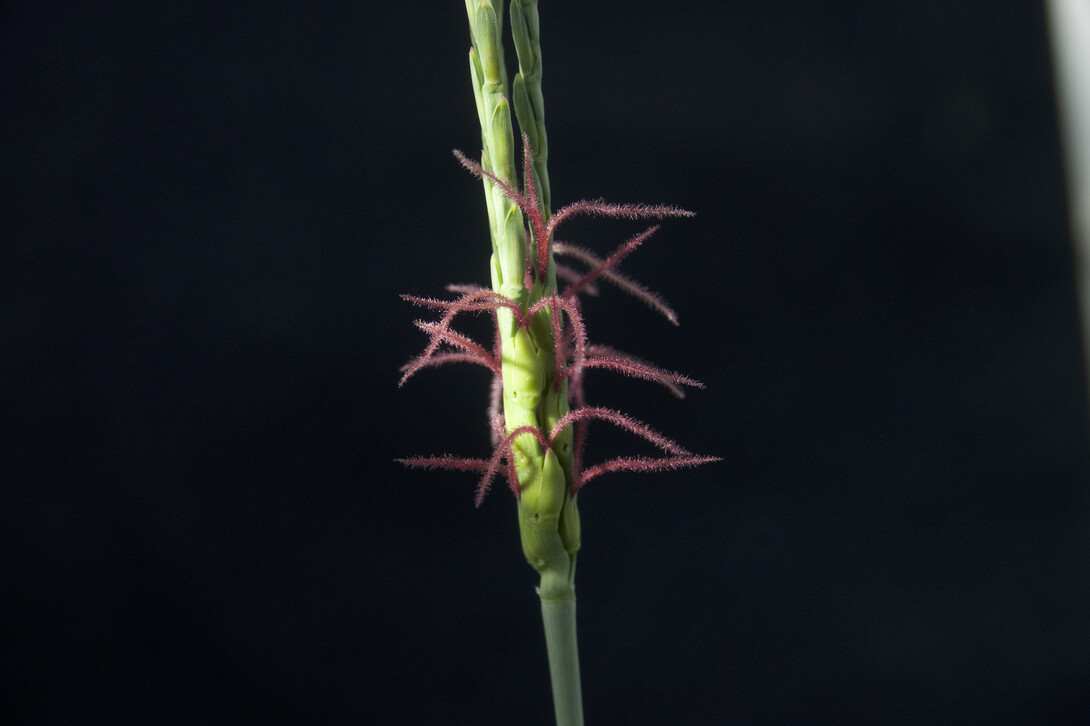
August 21, 2018
Lincoln, Neb. — New research conducted by the University of Nebraska–Lincoln’s James Schnable will use corn to test the idea that the emergence of specialized body parts occurs through whole genome duplication.
A gene consists of enough DNA to code one protein, and a genome is the sum total of an organism’s DNA. Schnable, an assistant professor in the Department of Agronomy and Horticulture and Center for Plant Science Innovation, has earned a 2-year, $299,801 grant from the National Science Foundation for a project to prove that certain genes are not available for individual duplication, and can only be replicated through whole genome duplication.
“Transcription factors are genes which control when other genes are turned off and on. Because cells are very sensitive to quantities of these transcription factors present, duplicating a single transcription factor gene can throw things out of balance, usually with negative consequences for the plant or animal in question. In a whole genome duplication all the transcription factors and all the genes they regulate are duplicated at the same time which avoids many of the problems caused by single gene duplication.”
In both plants and animals, the emergence of new specialized body parts, such as floral organs in plants or the multiple specialized types of teeth found in heterodont animals, is a rare process. Generally these specialized organs appear to originate as specialized versions of existing organs, yet their specialization requires a separation in regulation between different copies of the same organ.
The research could explain why the emergence of new, specialized body parts is so rare. Most apparent links between whole genome duplication and an increase in separately defined body parts, such as the 4-footed animal or flowering plants, occurred hundreds of millions of years ago.
Schnable’s team has focused this research on corn, as it produces two specialized flower heads for male and female reproduction, while all other related plants only produce a single kind of head. Researchers will test the link between a whole genome duplication in the corn lineage and the evolution of its distinct flowering heads. Reverse genetic techniques will be applied to both corn and sorghum, which lacks two flower heads,
to prove that this emergence required whole genome duplication, which created duplicate copies of many genes which rarely duplicate through other processes.
“We could potentially predict when the emergence of new specialized body parts is more likely, and provide initial insights into how specialized body parts could be engineered in future synthetic biology efforts,” Schnable said.
Research in this area also has the potential to guide the development of new engineered varieties of crop plants with multiple specialized leaf types. Engineering leaves high in the canopy to have fewer chloroplasts, would allow light to penetrate deeper leaves where lower wind speeds and higher humidity reduce the transpirational water cost of photosynthesis.
The research project will provide valuable training on conducting science at the intersection of genomics, genetics and phenomics to multiple graduate and undergraduate students.
To learn more about Schnable’s research, visit http://schnablelab.org/.
James Schnable
Assistant Professor
Center for Plant Science Innovation
Department of Agronomy and Horticulture
402-472-3192
schnable@unl.edu







